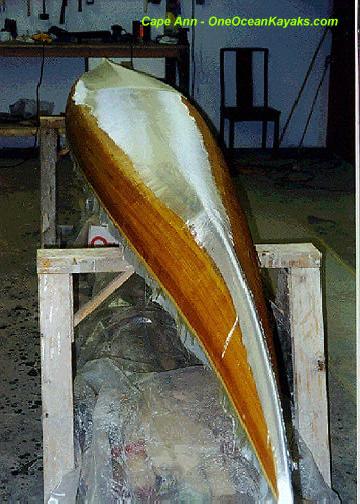after finishing all the sanding of the outside hull, I spend the whole afternoon cleaning the shop to start the fiberglassing tomorrow. I have two questions before starting, maybe you can give me some advice
I have to start around noon, because the friend of mine, who will be "the mixer" can`t start earlier. Has anyone an idea how long the time between the coating wirth west system 105/207 special coating hardener would be reakky. The temeprature in the shop will be probably between 17 and 20 degrees. Do I have to work out the third coat late in the night??
After reading Ted Moores chapter about the fiberglassing several times I think it will work. I´m wondering a little bit how to work with the glas at the stems: I´m not sure where to cut it: Should I make hems on the middleline of the outerstem or should I cut the way that there is no glas on the frontside of the stem (I talking about the area where thebrass stemband will be installed).
Thanks & best regards
Chris
